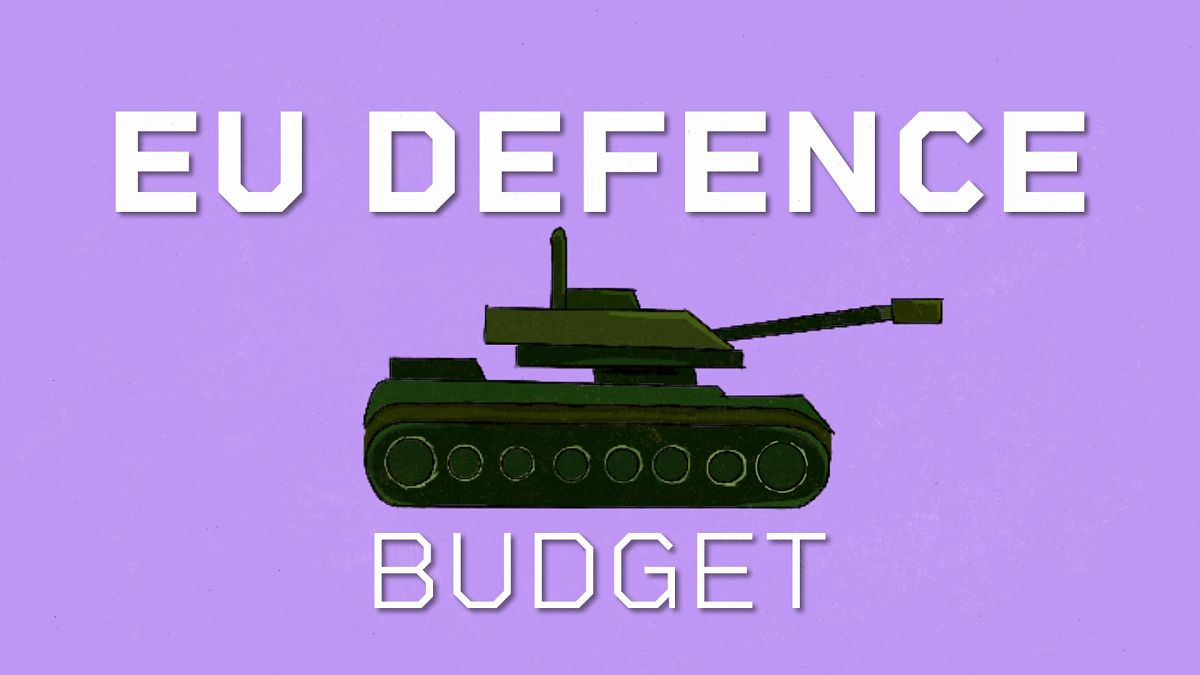The European Union wants to bolster defence in face of Russia’s aggression on Ukraine and growing US demands for greater European financial support for NATO.
Since Russia’s war of aggression against Ukraine, the EU has supplied much weaponry and logistical support. But the conflict highlighted difficulties in increasing ammunition and weapons production within the bloc.
The European Commission proposed a European Defence Industry Program in March 2024, that would provide for €1.5 billion to be allocated to defence from the EU budget between 2025 and 2027.
The money should boost defence, technology and industry, but is scanty when compared with the €500 billion of investment in the sector, which experts claim is needed in the coming decade.
“Historically, most spending in this area has come from national budgets funding their national militaries. There’s certainly a lot of people around here who say maybe you can make it more efficient if you clubbed together in some way at the EU level,” says Jack Schickler, who covers this policy area for Euronews.
Leaders, senior officials and analysts have proposed various ideas to obtain the huge amount of funds needed. One involves repeating the effort made after the Covid-19 pandemic and returning to issuing joint debt. But frugal countries are against the idea of so-called defence Eurobonds and are thinking of alternatives.
“Financing on the European level should be done in a solidarity way. And I think that Eurobonds are one option. But I think that there are also other things we can talk about,” argues Tobias Cremer, A German socialist MEP who sits on the European Parliament’s subcommittee on security and defence.
“For instance, one problem is that there is a lot of private money that could actually be channelled in that direction and at the moment there are a lot of barriers for private investors that can’t invest even if they wanted to,” he adds, pointing to need to analyse the possible role of the European Investment Bank.
The idea of spending more on defence also divides European citizens as we heard from ordinary people in Brussels. “I think that we have to stop giving money to Ukraine. I think it’s better to defend our countries now for the future,” said one interviewee.
“I would prefer not to spend money on it, but we are in a situation in Europe where we need to do it, both for our own protection, but we also need to protect Ukraine. If we don’t protect Ukraine, we don’t protect Europe,” said another.
Contributions to NATO could almost double
More money will be also needed if targets for countries’ contributions to NATO increase from a current indication of 2% of GDP to around 3.5% of GDP, as advocated by the new Secretary General of the alliance, Mark Rutte. This could mean that the EU would need to raise as a whole around €200 billion each year.
Currently only Poland, Estonia, Latvia and Greece spend 3% or more. Germany and France, the bigger powerhouses in the EU, have reached the 2% target. But other big economies, such as Italy and Spain, are not yet at that level of spending.
“Governments are pretty cash strapped at the moment. And also, there are a number of bars on the EU spending money on defence. A number of its members are avowedly neutral and there are legal restrictions on its ability, for example, to buy arms or ammunition,” says Jack Schicker.
A more Eurocentric strategy also risks creating a rift within the NATO alliance if members such as the US or the UK are excluded from new procurement.
Cremer defends increasing the 2% target to strengthen the European pillar of NATO but adds that “besides spending more, we also need to do it more efficiently”.
The EU is taking unprecedented steps to address the real potential of war. For the first time, it has a European commissioner dedicated to the defence industry, the Lithuanian Andrius Kubilius. It also wants to use part of Russia’s frozen assets for supporting Ukraine, but it remains to be seen to what extent it has the conditions and unity to be a global military power.
Watch the video here!
Journalist: Isabel Marques da Silva
Content production: Pilar Montero López
Video production: Zacharia Vigneron
Graphism: Loredana Dumitru
Editorial coordination: Ana Lázaro Bosch and Jeremy Fleming-Jones
Read the full article here


